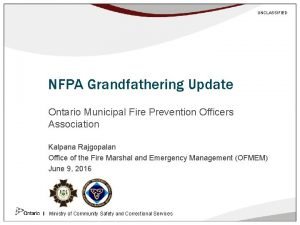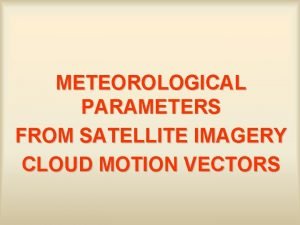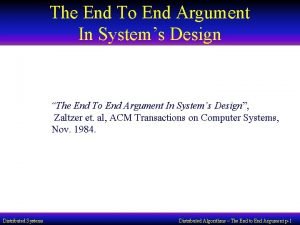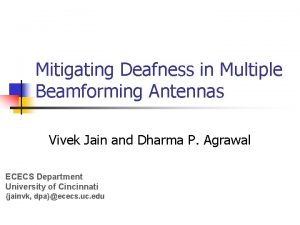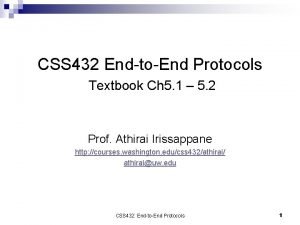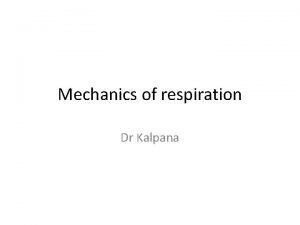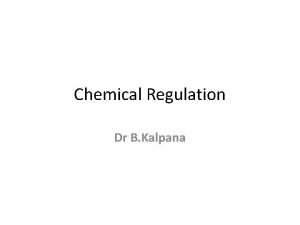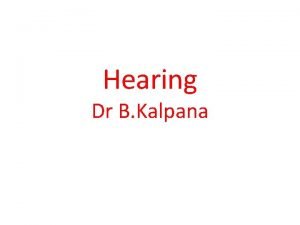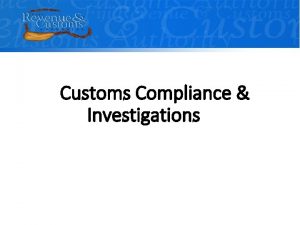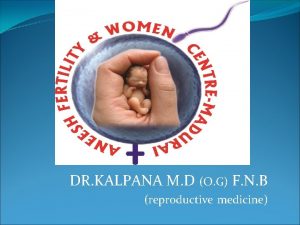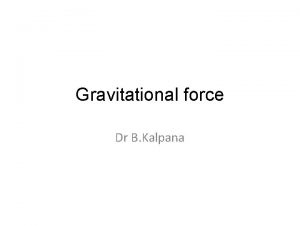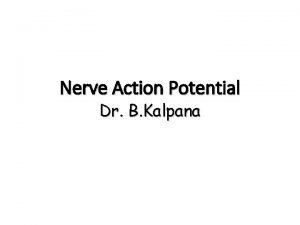Compliance Dr Kalpana At the end of class























- Slides: 23

Compliance Dr. Kalpana

At the end of class students should be able to: 1. Define Compliance. 2. Define compliance of lung , compliance of lung and thorax and give its normal values. 3. Explain pressure volume loop during inflation and deflation of the lungs 4. Explain the relaxation pressure-volume curve of respiratory system. 5. List the factors affecting compliance.

Compliance • Compliance is the measure of stretchability or elasticity or distensibility • Compliance is change in volume by unit change in pressure (∆V/∆P) : ml/cm H 2 O (L/cm H 2 O)

Types of compliances • As both lungs & thoracic cage has elastic nature –in the respiratory system the various compliances are; • Lung compliance (L. C) • Thoracic compliance (Th. C) • Total compliance (T. C) -- (both L. C & Th. C)

Normal value Compliance in relation to intrapleural pressure Compliance of lungs and thorax • 130 ml / 1 cm H 2 O pressure Compliance of lungs alone • 220 ml / 1 cm H 2 O pressure • compliance of lung alone is 2 times compliance of lung and thorax

• This is because , inside thorax, some energy is required to expand the thorax • lung can be distended such an extent due to • presence of large number of elastic fibers • And the peculiar arrangement of elastic fibers.

• Specific compliance – It is the compliance per unit volume • Compliance/FRC (in L per cm H 2 O per L)

Hysteresis loop

• P-V relationship is curved • At identical Ppl volume is less in I phase than in E phase. • Difference in distensibility of the lungs between I and E phase. • Viscous resistance • Airway resistance

Measurement of compliance Lung Compliance measured in static condition • Measured by inspiring a series of known volume of air and simultaneously recording the intrapleural pressure of each. • The air is expired in steps till the volume returns to the original prerespiratory level

P-V relationship of lung

• Slope of pressure –volume curve is the compliance-measure of distensibility • Hysteresis is smaller during normal breathing • Close to deflation limb of P-V curve

Measurement of compliance of lung and thorax • Plotting of airway pressure VS volumerelaxation pressure curve of total RS. • Subject inhale from spirometer • Holds his breath and relaxes the muscleairway pressure.

P-V relationship of lung and thorax

• At the end expiratory position , Volume=FRC at with airway pressure=0 • Relaxation volume • Curve shifts downwards and right-compliance is reduced • Shifts upward and left-compliance is increased.

Factors affecting lung compliance • Lung volume • Phase of respiratory cycle-greater during deflation. • Effect of gravity-less at apex –more distended alveoli at apex. • Surface tension-more pressure is required to distend the lungs-compliance is decreased.

Factors affecting compliance üElastin content and their geometric arrangement üSurfactant increases the compliance üRespiratory muscle power üVolume of lungs (direct relation) üAirway resistance üViscosity of lung tissue

Aged persons • In old age –change in physico-chemical properties of elastin & collagen –increase distensibility

Clinical significance of lung compliance Diseases of lung alter lung compliance

Increase in compliance • Emphysema • In emphysema –degradation of elastin & collagen frame work –leads to increase distensiblity


Summary

References • Comprehensive Textbook of Medical physiology (Vol 2 first edition) G K Pal • Text book of medical physiology (Vol 2 6 th edition) A K Jain AEJ 23
 Kalpana rajgopalan
Kalpana rajgopalan Kalpana had encyclopaedic knowledge means
Kalpana had encyclopaedic knowledge means Satellite derived winds
Satellite derived winds Esv and edv
Esv and edv Ejection fraction vs stroke volume
Ejection fraction vs stroke volume Compiler front end and back end
Compiler front end and back end Dash phase is known as the back end of the compiler
Dash phase is known as the back end of the compiler Descendorektostomie definition
Descendorektostomie definition End-to-end wireframe parsing
End-to-end wireframe parsing End to end argument
End to end argument End to end accounting life cycle tasks
End to end accounting life cycle tasks End to end delay
End to end delay End to end delay
End to end delay End to end
End to end Automatic knowledge graph construction
Automatic knowledge graph construction Multiple procurement cycles
Multiple procurement cycles Hát kết hợp bộ gõ cơ thể
Hát kết hợp bộ gõ cơ thể Slidetodoc
Slidetodoc Bổ thể
Bổ thể Tỉ lệ cơ thể trẻ em
Tỉ lệ cơ thể trẻ em Gấu đi như thế nào
Gấu đi như thế nào Chụp tư thế worms-breton
Chụp tư thế worms-breton Chúa sống lại
Chúa sống lại Môn thể thao bắt đầu bằng từ chạy
Môn thể thao bắt đầu bằng từ chạy
